Reminiscent of the most glorious historical period of South India.
Along the banks of a beautiful river lies the Royal Enclosure of Hampi.
That contain the ruins from the past of the mighty Vijayanagara Empire.
And today I will not just take you through these ruins on a virtual tour of the Royal Enclosure of Hampi. But also give you all the information on exploring the Royal Enclosure of Hampi and beyond.
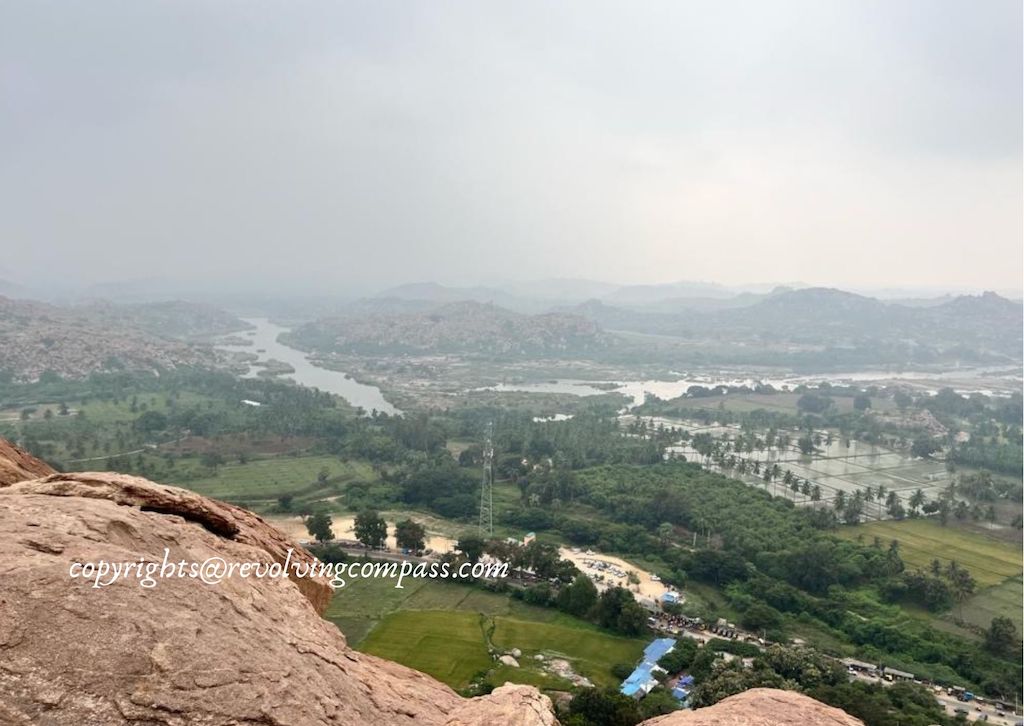
Hampi is a UNESCO World Heritage site in Karnataka. And perhaps the most visited place in Karnataka as well. It was once the center of the great Vijayanagara Empire under whose reign the region flourished in trade and culture both. And emerged as one of the most prosperous kingdoms of India at the time. What remains today in Hampi are remains of the ruins of the empire that contain many artefacts and monuments. Including temples, palace quarters, stables, royal enclosures, water tanks, market squares etc. which played a significant role in reconstructing the history of this era. Their unique architecture and beautiful formations attract one and all.
But, let me be honest. It can be overwhelming to explore Hampi. Because the places of interest are scattered through thousands of acres of land. And they go in loop at places 🙂 This was one of the reasons I couldn’t explore Hampi fully on my first trip to Hampi years back. Nevertheless, I got a second chance to finally visit here. And made the most of it. This time, dividing my whole exploration of Hampi systematically in 5 different parts –
Distinct historical trails to explore in Hampi
The Royal Enclosures of Hampi
Vittala Temple and the ruins around it in Hampi
Virupaksha Temple of Hampi and the ruins around it
The Hippie Island across the Tungabhadra river in Hampi
Places to see in Hampi beyond the ancient empire – newly developed parks, dams, riverside cafes etc.
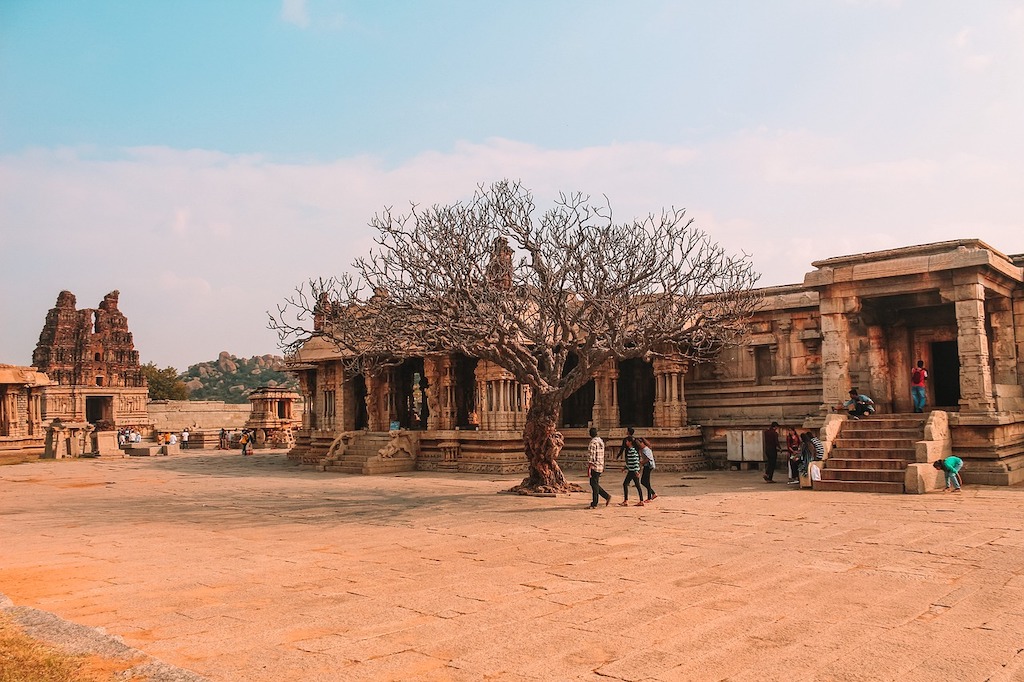
Once you arrive in Hampi, you can embark on each of the above trails in any order. We first explored the Royal Enclosure of Hampi. So, I am taking you through the Royal Enclosure of Hampi in this first article. And the details of the rest will follow soon. If you want to know more about Hampi, I have compiled this complete guide to explore Hampi. It contains all the information including accommodation options in Hampi, Things to do in Hampi, Places to see in Hampi, what will be the best time to visit Hampi, what is the weather of Hampi like, what to pack for a trip to Hampi, what kind of cuisines you can expect in the region, how to reach Hampi, how to travel around and all the other required information.
If you want to explore each trail in depth, then you should keep a day for each. But I know that isn’t possible for most of us. So, I will suggest to keep a minimum of 4-5 hours for each of the trails to explore in Hampi. This way, you can explore them all. Having said that, let’s get started with our journey today around the Royal Enclosures of Hampi.
PS : If you are allocating less time, then you will have to compromise. Either you will be rushing through the sites of Hampi or you will have to choose only a few. This was my second trip to Hampi. And I could still not explore Hippie Island and the trail along the Tungabhadra River that connects from Virupaksha Temple to Vittala Temple – two of my bucket list items. I need one more trip to Hampi 🙂
Map of the Royal Enclosure of Hampi
You can park your vehicle in the designated Parking lot of the Royal Enclosures of Hampi. And then explore around the places in the above map in the order in which we lay them out in the next section.
Places to explore in and around the Royal Enclosures of Hampi
PS: There is no “defined” start and end to the Royal Enclosures of Hampi or other ruins of Hampi. You might go to and fro a little bit while exploring them. And that is absolutely fine. With that, I have compiled here all the major places to see in the Royal Enclosure of Hampi, which I personally saw while exploring the Royal Enclosure of Hampi. And in the order in which I explored them.
Underground Shiva Temple
There are many underground temples in Hampi. They were built several meters below the ground level. And since the region is so old, dating back to almost 2nd and 3rd century BC, many of them further got buried under layers of earth. And are still being excavated. Having said that, underground Shiva Temple that lies in the area of Royal Enclosure of Hampi is one of the most intact and prominent underground temples to visit in Hampi. The core parts of this temple remain submerged in water for most part.
The main shrine, the outer hall of the temple, an impressive Kalyan Mandapa and a dried out canal system around the temple are some of the structures that you can see while visiting the Underground Shiva Temple in the Royal Enclosure of Hampi.
Bhima’s Gateway Hampi

Bhima’s gateway is one of the many gates which led inside the gated kingdom of Hampi from outside. It is just around 200 meters to the Underground Shiva Temple. I guess it gets it’s name from the carving of Bhima – the strongest Pandava – on it. Who was a symbol of strength. Also, the gate has a carving of Draupadi as a mural.
The reason why Bhima’s Gateway is famous amongst the gates of Hampi is it’s brilliant architecture. It is impossible to cross this gate in a straight line. Thus, deliberately slowing down vehicles or anyone entering through this gate. It must have been very difficult for any enemy to march through this gate with speed and attack the kingdom of Hampi.
Koteshankara Gateway
Another gate near the underground Shiva Temple, the Koteshankara Gateway is also called Shankara Narayana Bagilu. It is one of the several main gates that led inside the gated area of the Hampi Empire. Sadly, most of the structures around this gate are in ruins now. But the gate itself remained standing.
Underground Chamber
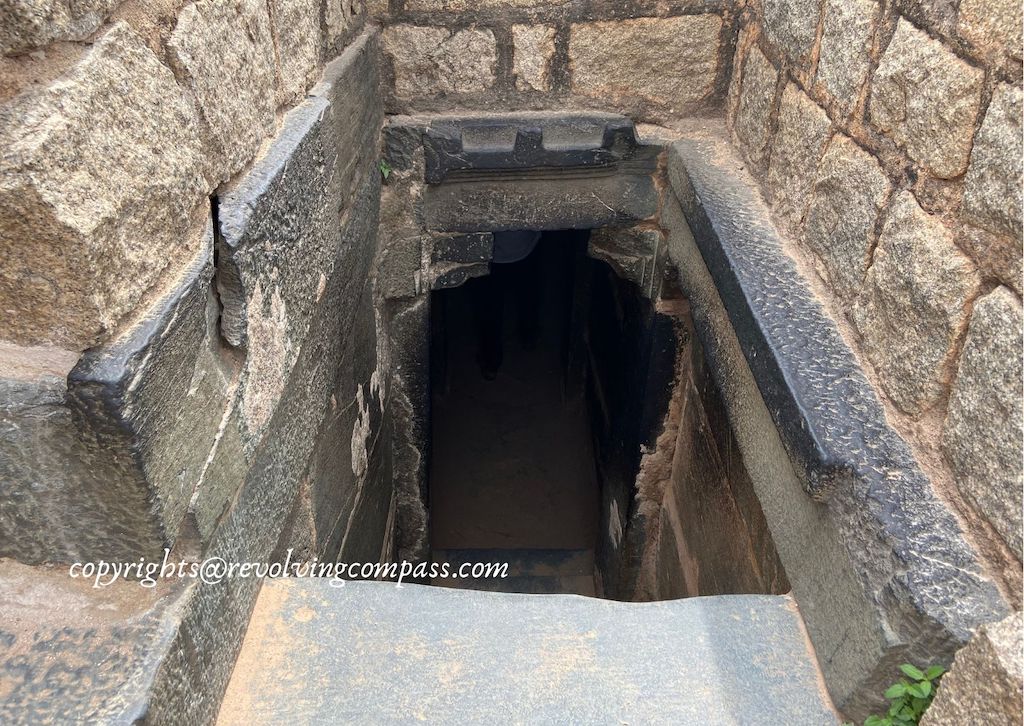
Yet another underground structure in this region is the underground chambers accessible through almost secret passageway. The narrow stairway that leads inside the underground chambers is not easy to navigate. Reminded me of similar narrow and steep stairways in the Udaipur City Palace that were constructed on purpose to reduce the advance of enemies would they get access to the palace.
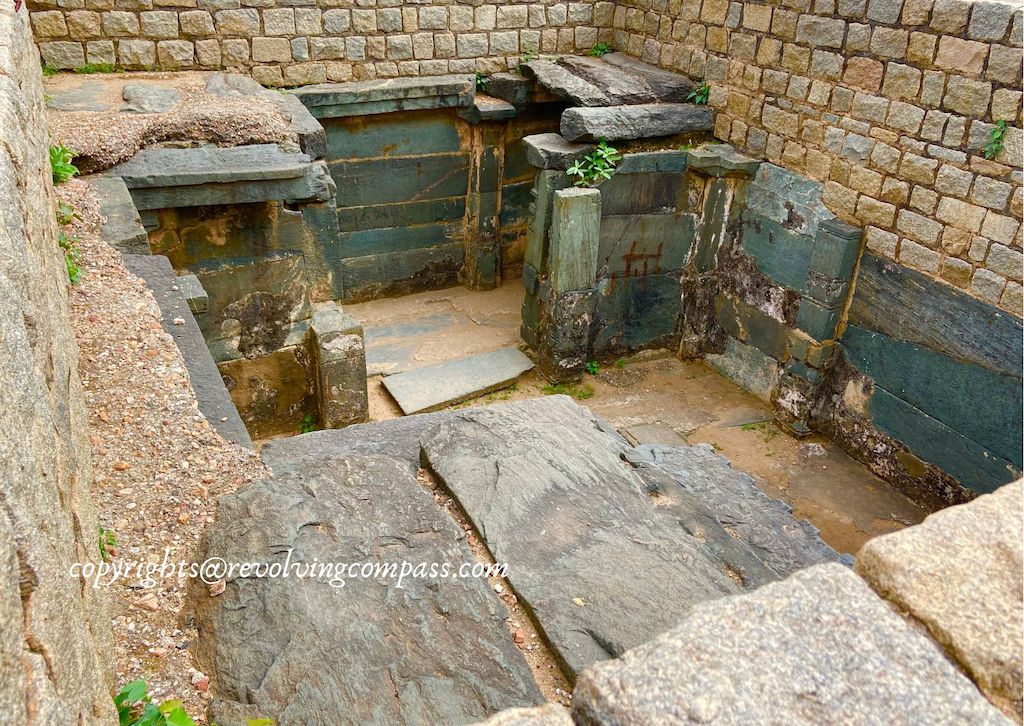
Some believe these secret chambers were used as treasury building while others believe them to be a shrine. Neither vault nor any idols are present in these chambers as of today to establish which is the right belief.
King’s Audience Hall (Divan’e Aam)
A massive structure that is a testimony of the populous kingdom and the huge number of people that must have attended the King’s courtroom during the Vijayanagara Empire time. The King’s Audience Hall or Divan e Aam is a place where the king sat and met the people of the kingdom, listening to their woes and complaints. And providing solutions. It is a very common structure in any of the different forts and palaces of India that I have visited so far. But I must admit, I had not seen one as massive as the one I saw here in Hampi.
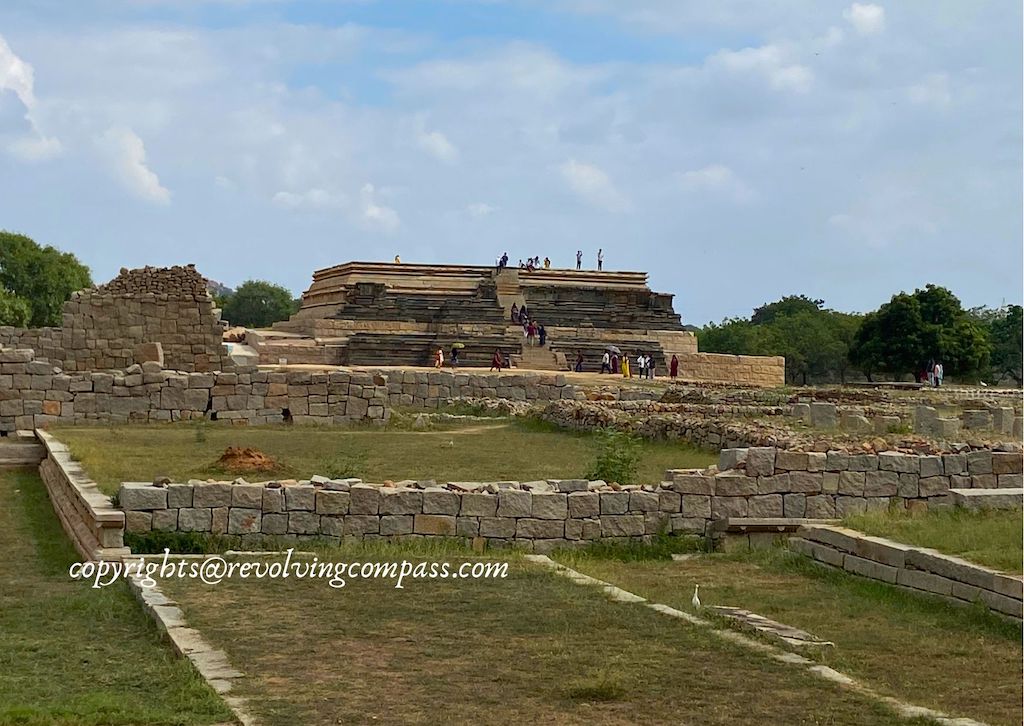
Hale Kalyani Hampi Or Royal Palace ruins
Palace of Vira Harihara or the Royal Palace of Hampi in the Royal Enclosure of Hampi is the next site that we visited. As the name suggests, it was the living quarter of the king of Hampi. And it only makes sense that it is located across the zenana enclosures where the queens lived. Unfortunately, the whole palace structure is gone. And only the base remains. Leaving it to the imagination of the visitors to think how royal it must have been.
Elephant Tank
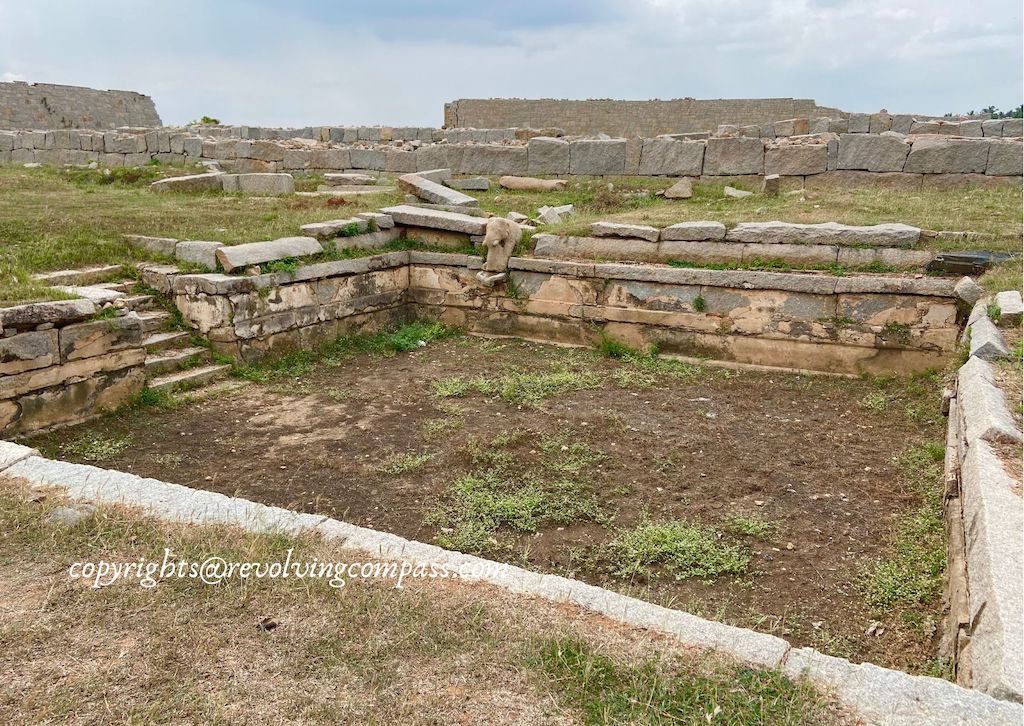
In front of the royal palace ruins and besides Hazara Rama Temple lies a water tank. It is called “elephant tank” as it has a sculpture of an elephant in the middle of the tank. Not sure if it was the source of water feeding the tank. It is also called ” Anebavi” meaning “Elephant Well”. It is speculated that the water from this tank was used to feed royal animals.
Hazara Rama Temple
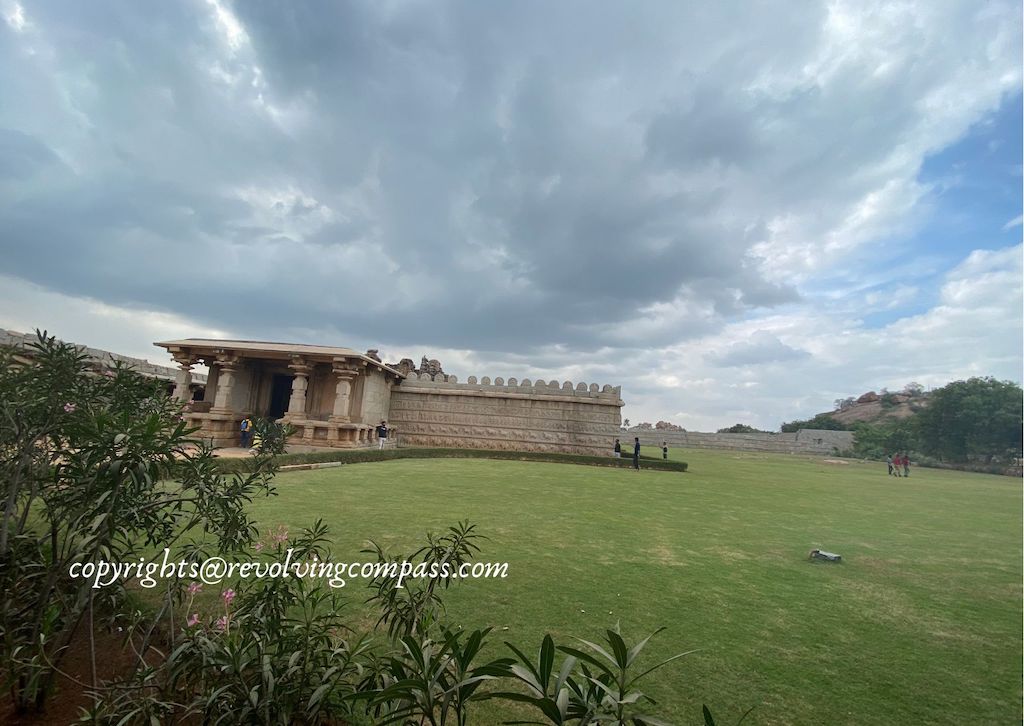
The next stop on our trail of the Royal Enclosure of Hampi , Hazara Rama Temple is a highly impressive temple of the ancient times. Although it might not be as large as the main Virupaksha Temple and Vijaya Vittala Temple of Hampi. Nevertheless, I was highly impressed by the intricate work on the pillars, walls and roofs of this temple, depicting scenes from the Puranas and Ramayana.
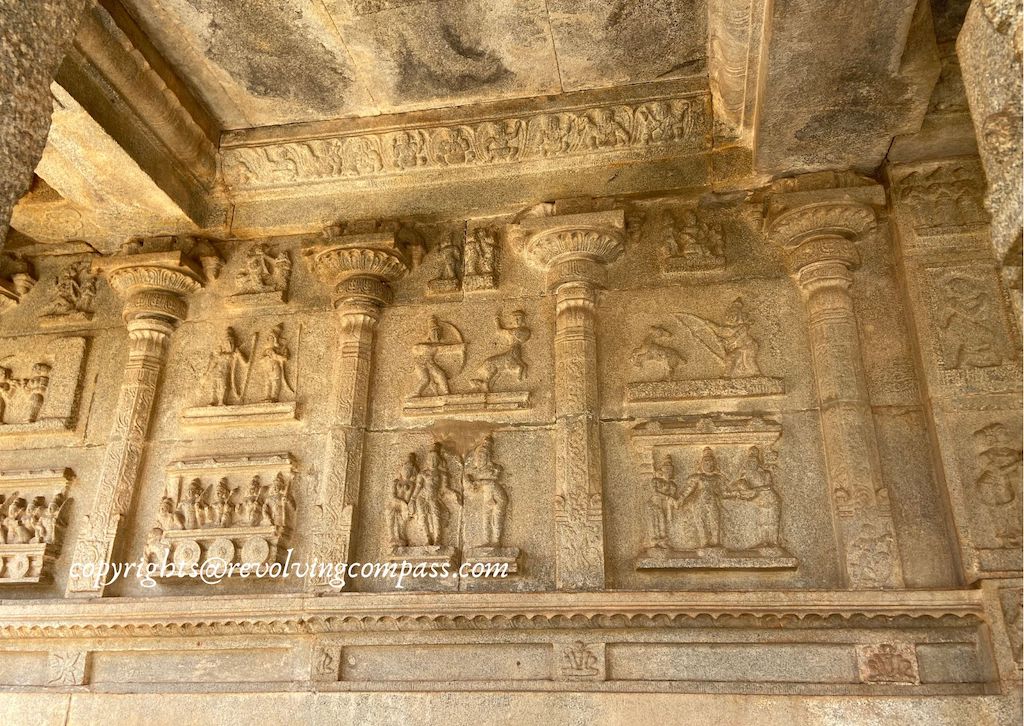
The overall construct of Hazara Rama Temple Hampi is much simpler than other major temples. With just one main sanctum, one outer chamber and an ardha mantapa. It is said that the rest of the intricate pillars were added to the temple at a much later stage.
The word ” Hazara Rama” means a thousand Rama. And perhaps the reason for this name is that the temple is dedicated to Rama. And countless relics of Rama and Krishna can be witnessed on the pillars of the temple. Are they actually a thousand relics? I couldn’t count 🙂 Apart from these relics, the temple walls and pillars are also adorned by pictures of horse and elephant possessions, festival celebrations, happy dancing women and many other scenes from daily life of the time.
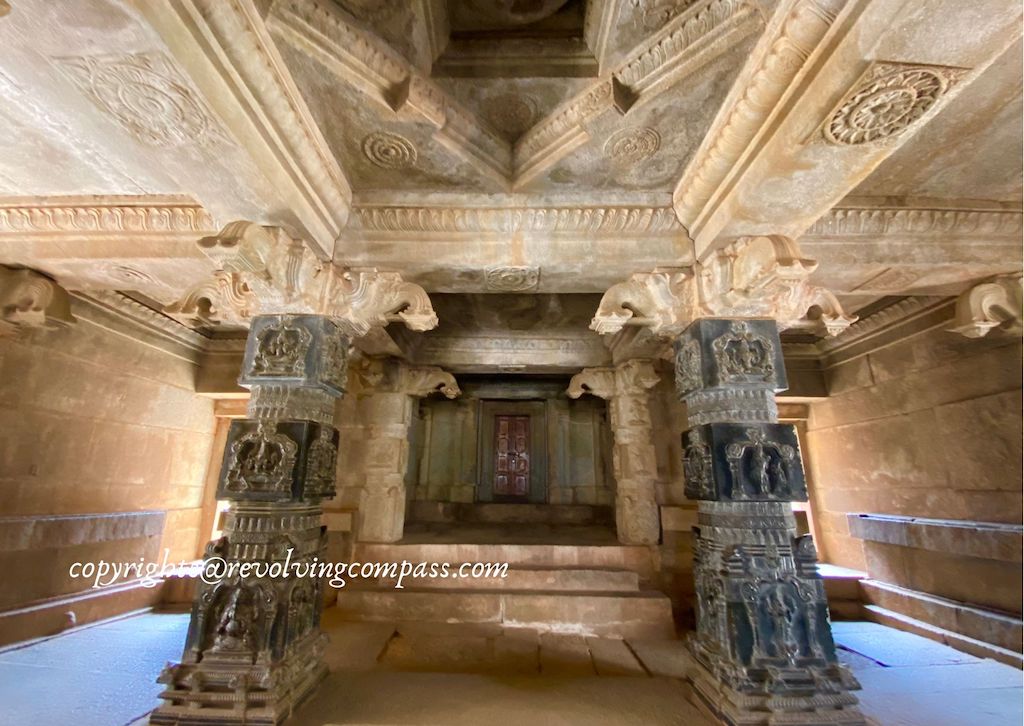
The temple has a huge lawn in the front, an entryway which I felt was very similar to that of the Avani Temple near Kolar. Last but not the least, amongst the ornate columns of the temple, you will see 3 holes. Perhaps this is the place where the idols of Rama, Sita and Lakshmana were placed. But, later either they were destroyed or plundered.
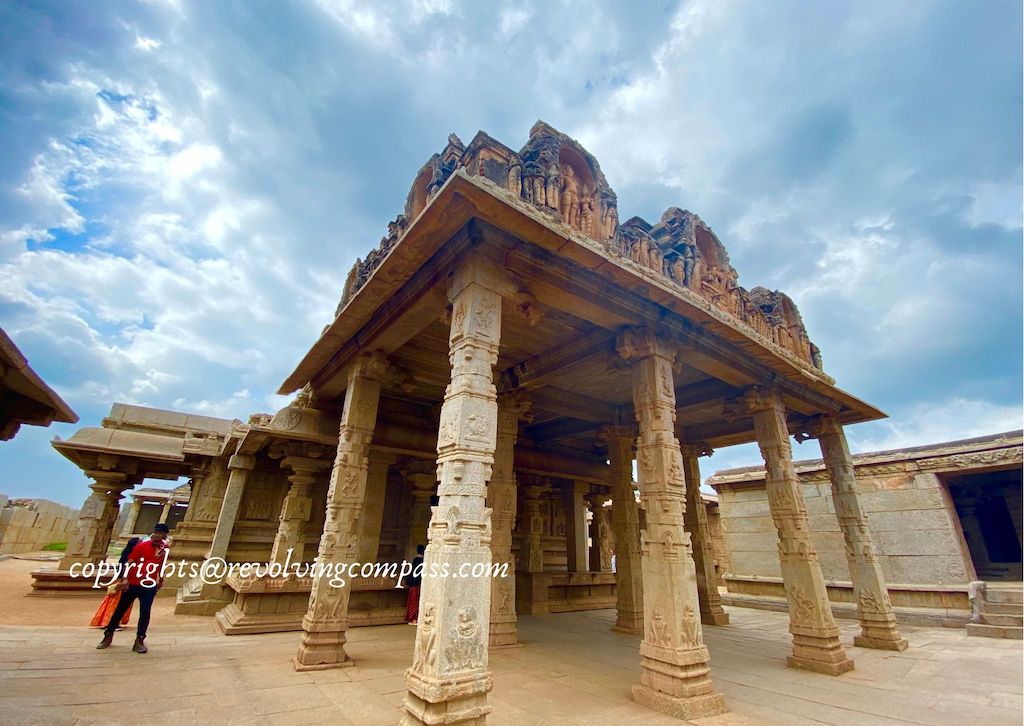
Opposite Hazara Rama Temple is one of the several prominent Bazars of Hampi – the Pan Supari Bazar. This area is now used as a parking lot. The path through the park leads to two temples – Madhava Ranga Temple at 330 m and Pattanada Yelamma Temple at 200m.
The “Enclosed” area of the Royal Enclosure of Hampi – Zenana Enclosure

After visiting Hazara Rama Temple, as we proceeded further, we reached the entrance to the enclosed area of the Royal Enclosure of Hampi. This area contains some of the most important, intact and beautiful structures. There is an entry ticket to this area. And it is also referred to as Zenana Enclosure as most of the places in this area were used by the royal women of Hampi.
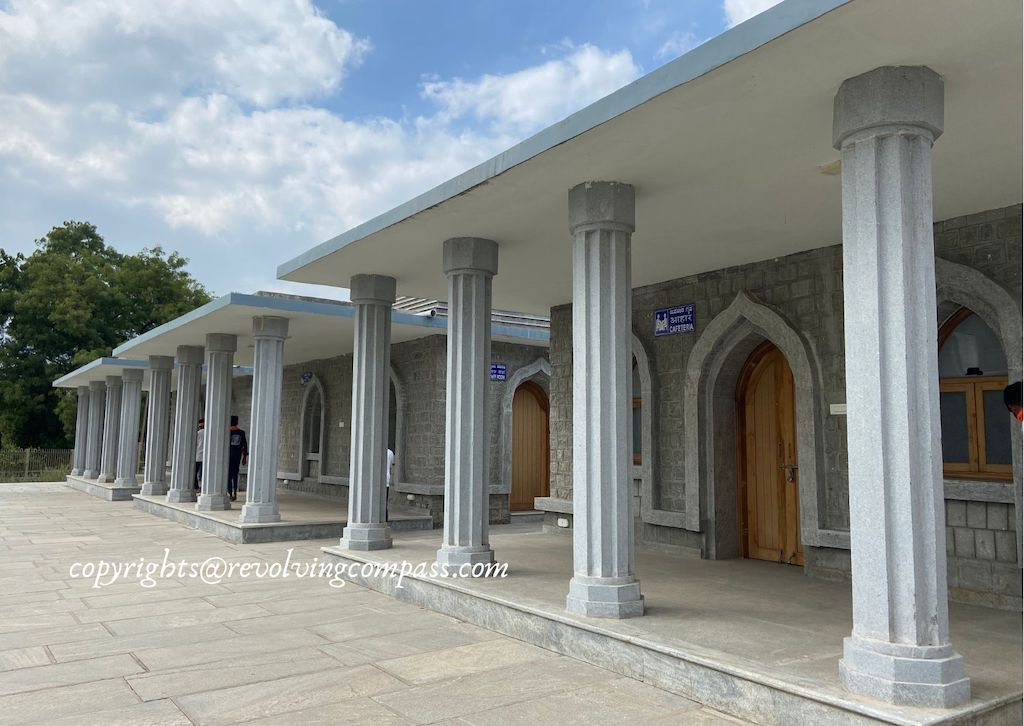
Towards the right of the entry gate lies the ticket counter, the washrooms, staff rooms and facility for drinking water is also available.
Timing of the entry to this area : 6:30 am to 6:00 pm
Entry fee: INR 40 for Adults. Entry is free for kids upto 14 years of age.
Let me walk you through the places to see in this region of the Royal Enclosure of Hampi
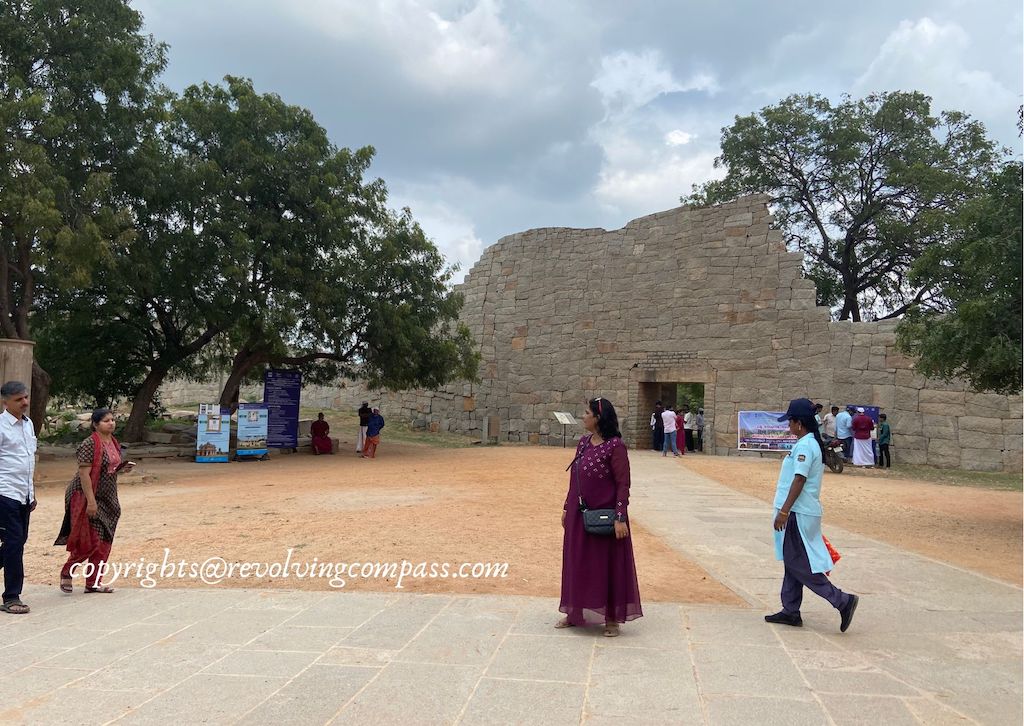
Hampi Museum / Treasury
As soon as you enter inside the gate, on the left you will see a small but impressive museum. This museum of Hampi houses several small and large inscriptions, sculptures, broken pieces from the excavated sites etc. that are placed here.
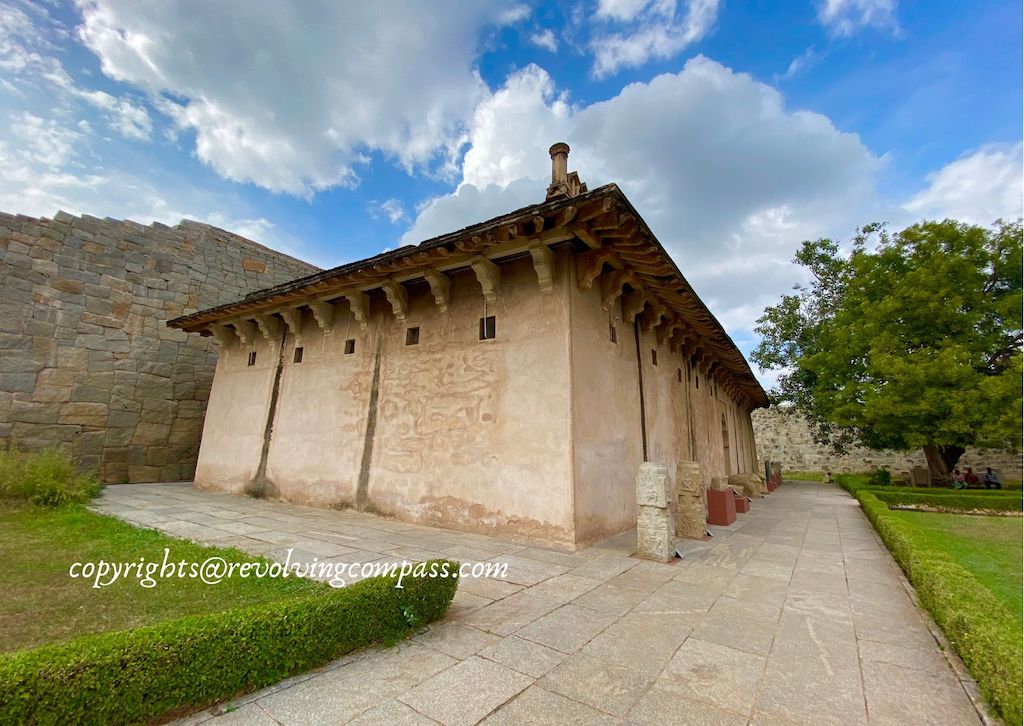
Some of these pieces are so small, yet so intricate, that I was amazed how the artisans in that era were able to carve such pieces with such intricacy. Look at the pictures below to relate –
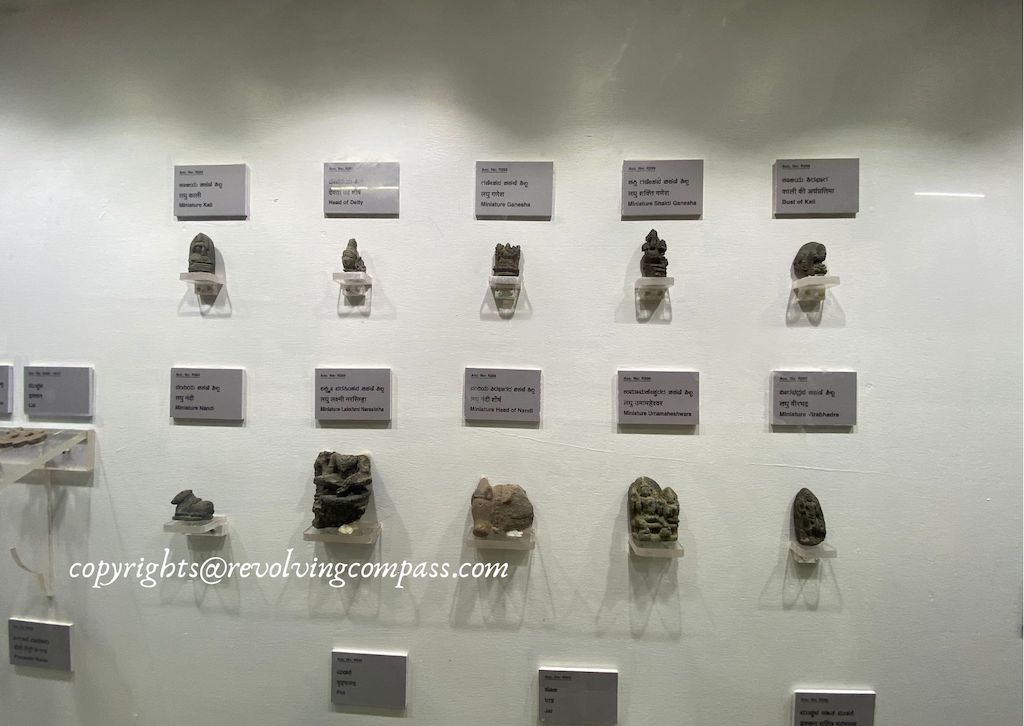
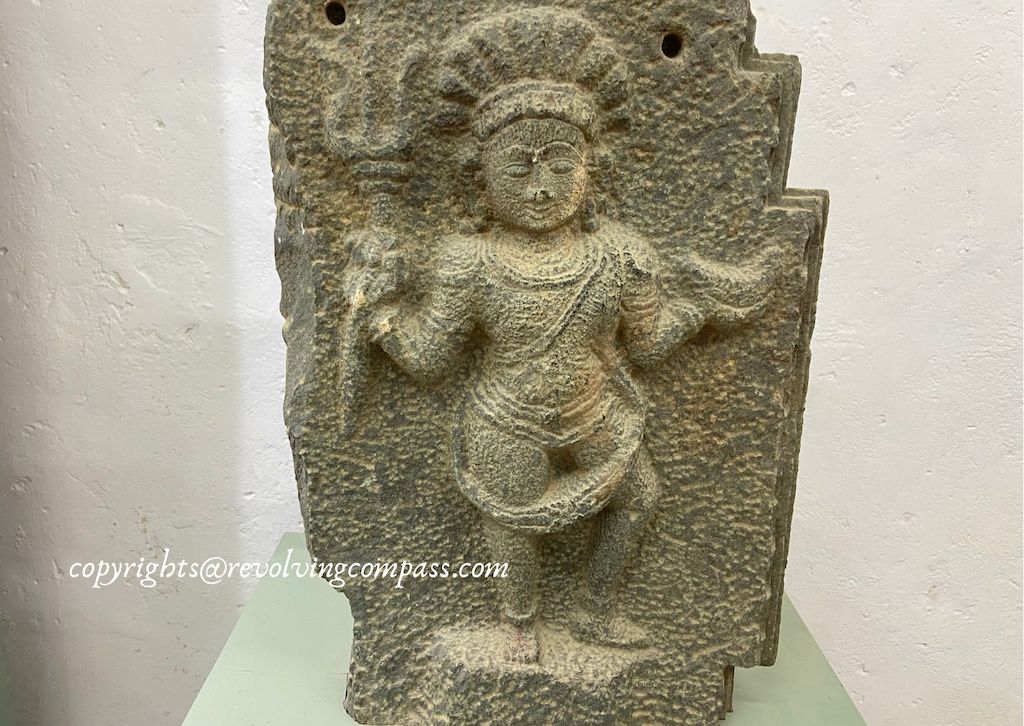
The building hosting the Hampi museum was a treasury building or a storeroom. As it is has a robust built, no windows and a narrow arched entryway all suggesting towards the same.
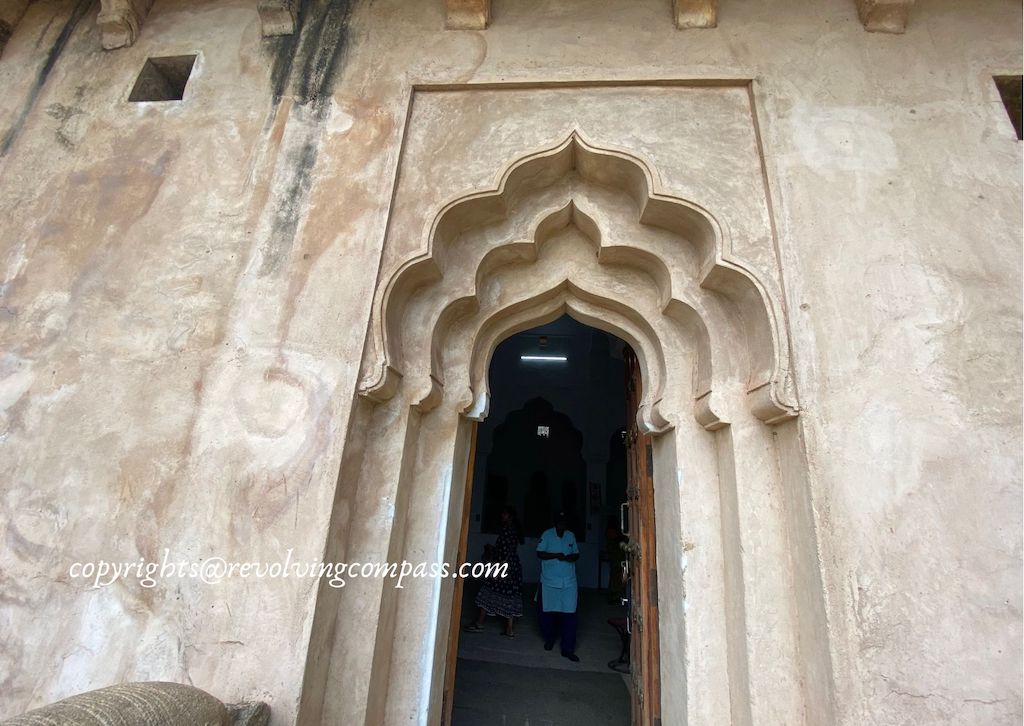
Mohammadan WatchTower
A “watchtower” is a tall structure that you will see at several different parts of Hampi. It was made to station soldiers to keep an eye on approaching enemies. A prominent watchtower is the Mohammadan watchtower that you will see diagonally opposite the museum. It is a huge and impressive tower that was not at all destroyed in the multiple plunders that the empire suffered during it’s declining days.
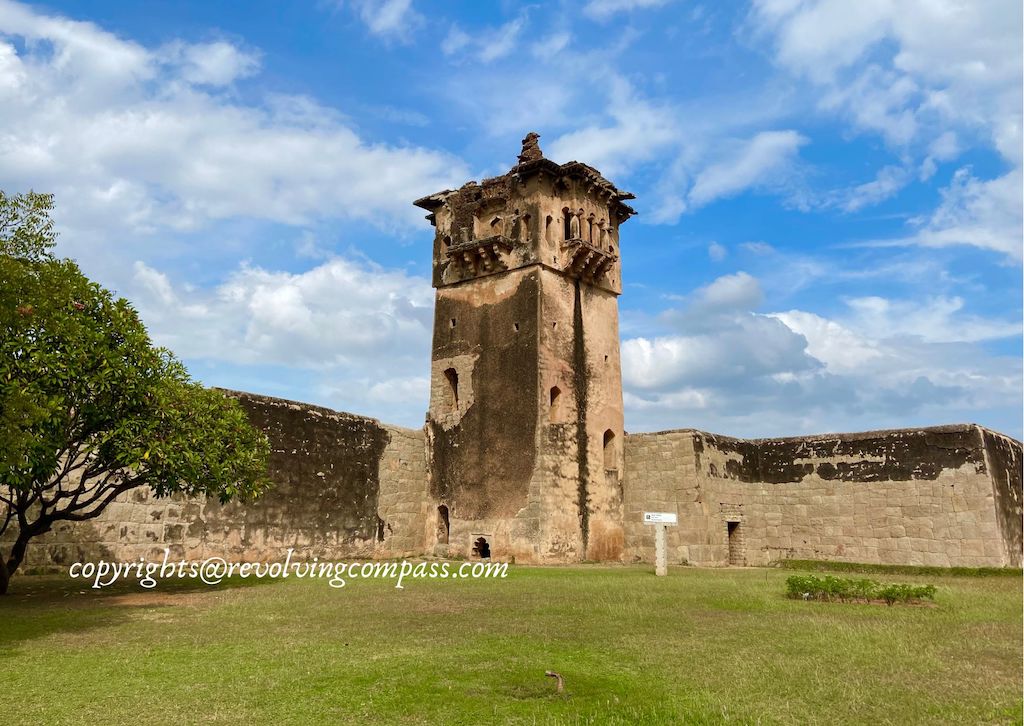
Lotus Mahal
An impressive two storied building that resembles a flowering lotus – the Lotus Mahal has a structure different from all the other places you will witness among the ruins of Hampi. It is also called “Kamal Mahal or Chitragani Mahal” . It is one of the very few structures among the ruins of Hampi that remained almost completely intact. Also, this is the only structure where I could see a blend of Islamic and Hindu architectural styles. The symmetrical structure of the Lotus Mahal Hampi reminds one of the structures of India Gate and some of the palaces built by the Muslim Sultanate of India.
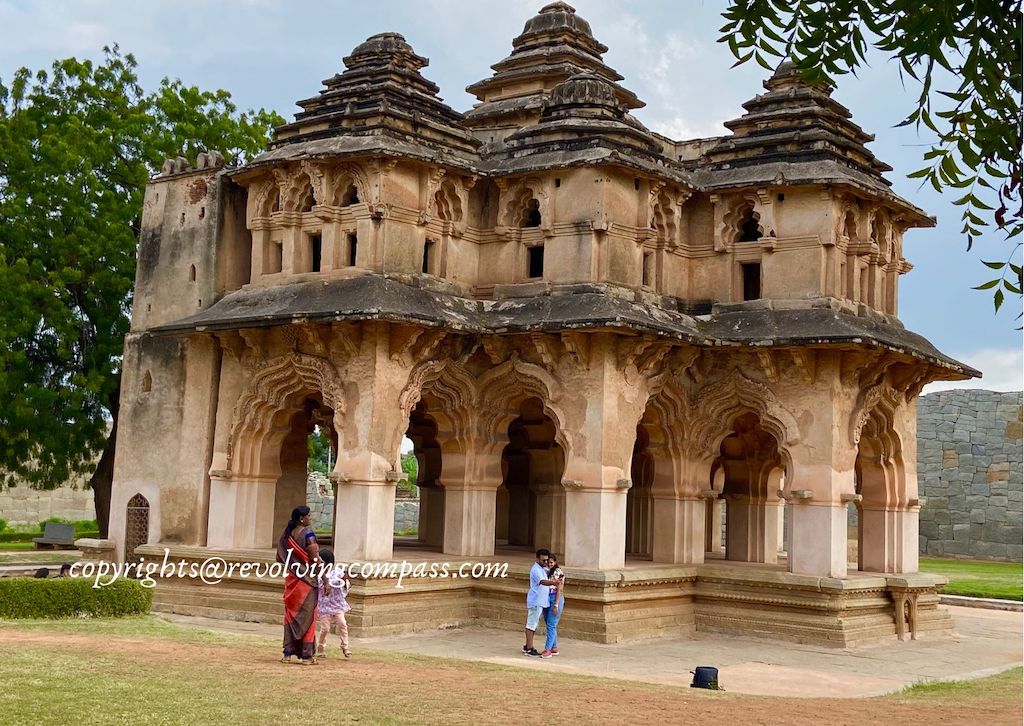
As per the historical accounts, Lotus Mahal was used for multiple purpose –
- As a place for the royal ladies to meet and socialise
- As a council chamber where the king and his ministers held meetings from time to time.
- Recreational events and parties
- Dance and cultural performances
The stairs that lead to the upper areas of Lotus Mahal are now locked. I wish I could go through them and explore further!
Elephant Stables
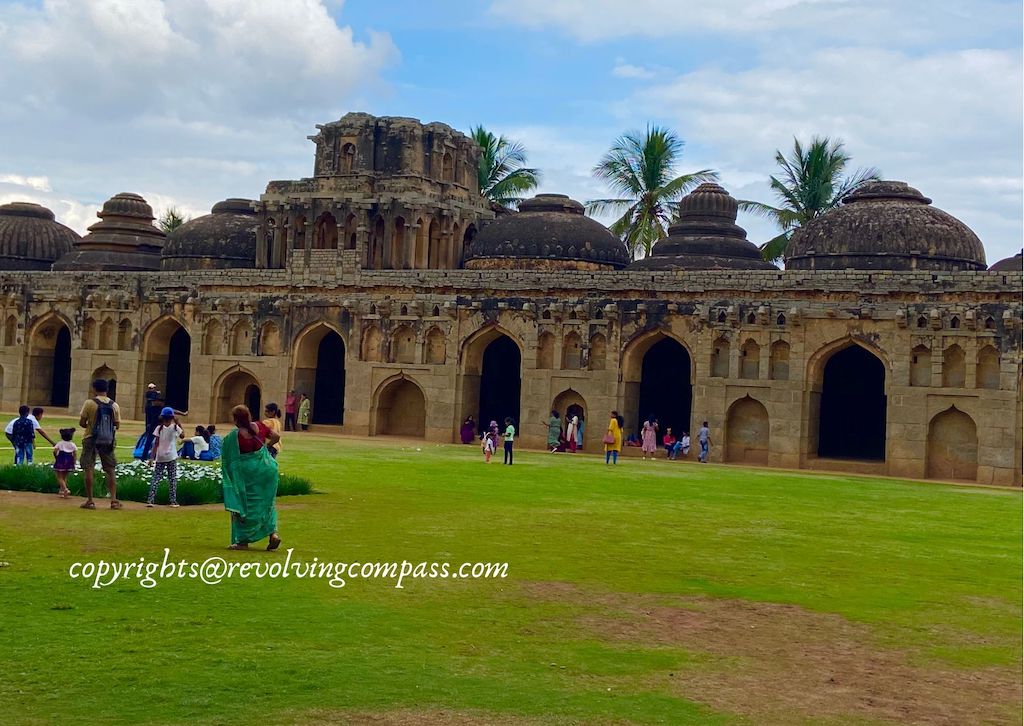
Although I have seen horse stables at several places. But Hampi is the only place where I have seen elephant Stables. They lie right outside of the Zenana Enclosures. There is a long structure that stands in front of you, at one end of a sprawling lawn. Where several elephants of the royal kingdom of Vijayanagar were sheltered. With an arched entry for each elephant, and an arched tower on top of the entryway, it looks nothing less than a palace in itself !!
Dandanayaka Enclosure
Dandanayaka Enclosure or “Danaik’s enclosure” was perhaps an administrative part of the Royal Enclosures. But it’s not firmly established what exactly this place was used for. Nevertheless, it’s highly symmetrical structure is something impressive and to look for.
Queen’s Bathhouse
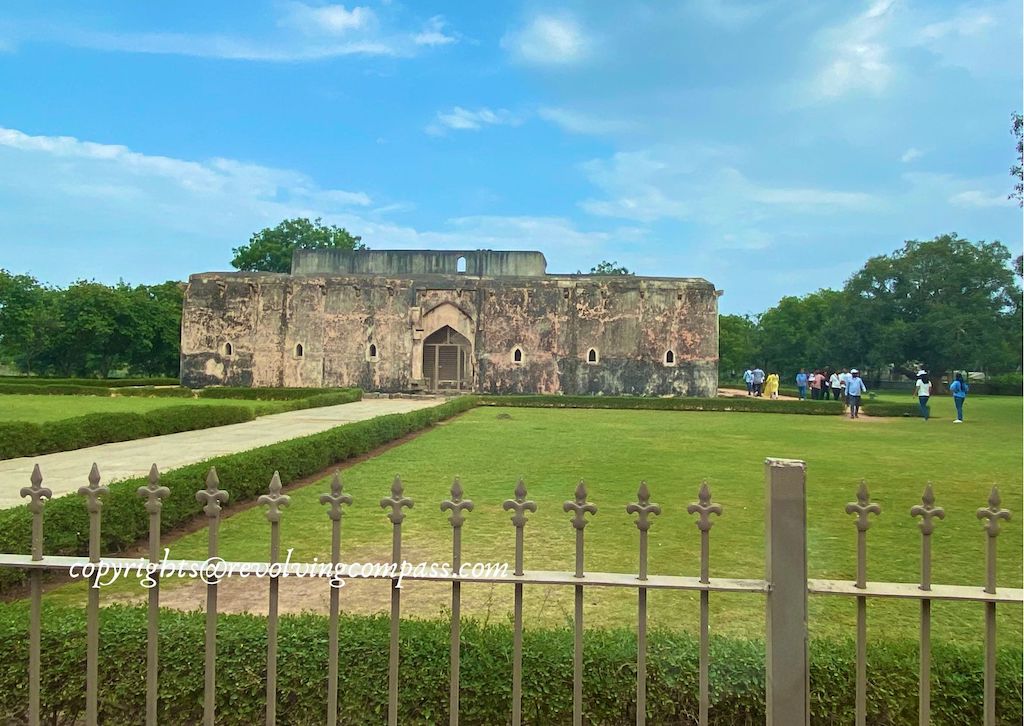
As the name suggests, the Queen’s bathhouse was an enormous bathing area for the royal ladies. But it is nothing less than a palace. With ornate windows and carved pillars surrounding the central pond, the Queen’s Bathhouse is another one of the structures that has remained intact through the test of time. The Queen’s Bath is located right outside the royal enclosure. So, as you finish visiting rest of the above sites, you can stop here on your way out of the old Hampi area towards the town of Hoskote.
Octagonal Bath
Yet another bathing area, which is even more enormous than the Queen’s Bathhouse. The Octagonal Bath is a little isolated from the rest of the ruins and structures in and around the Royal Enclosure of Hampi. There is a mud road off the main road from near Chandrashekara temple which leads to the Octagonal Bath. It will be good to take a guide with you or ask a local for direction. As the name suggests, this bathing area is constructed as an octagonal structure.
I am sure apart from the above, there will be many more ruins to discover and hidden structures in this area that I must have missed. Do let me know in your comment if you know of any other place to add to the above list. In fact, even today active excavations keep happening in Hampi. And temples, palace complex structures, bathhouses, markets and other structures are uncovered.
A few other structures that I could spot on the map around the Royal Enclosure but didnt get sufficient time to visit included –
- Tenali Rama Pavilion
- Ancient Tenali Mantapa
- Sri Anjenya Swami Gudi (near Bhima’s Gateway)
- Panorama Platform (an observation deck to get bird’s eye view of the surroundings)
What is the best time to visit Hampi & Royal Enclosure of Hampi
Season wise, I find pre-monsoons to be the most comfortable when visiting Hampi. With clouds hovering overhead, giving the much needed protection from the sun, definitely it is a good time to explore Hampi. But, we must be watchful of the changing weather conditions during the monsoons. Within moments it can go from super hot and sunny to heavy downpours. And as a result, over the last few years the ruins were submerged in water several times.
However, if the weather predictions remain favourable, with no yellow or red alerts related to rains, go ahead. Although people say winter is the best time to visit Hampi. But when I visited here long back at the end of December, I felt it was a lot hotter as compared to the monsoons. However, we got lucky on our second trip to Hampi. In November last week. When the sky remained overcast for most part of the day. And cool breeze were a welcome phenomena.
On the way of Hampi comes Chitradurga Fort which you can explore as well.
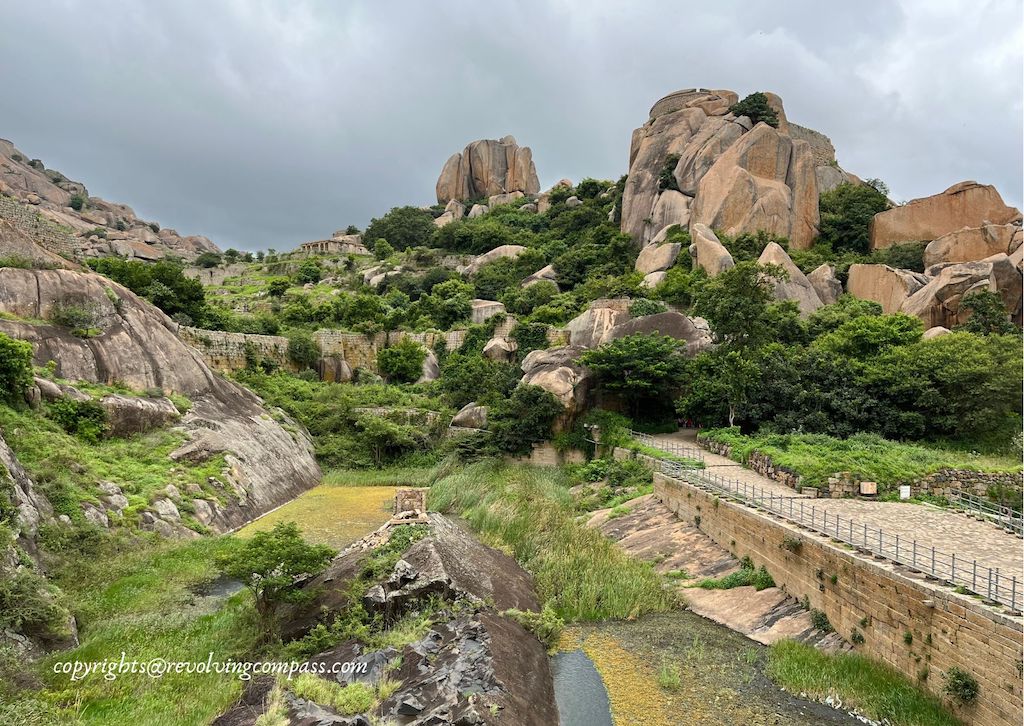
And also hop into some beautiful sunflower fields in case you happen to visit between mid August to mid September.
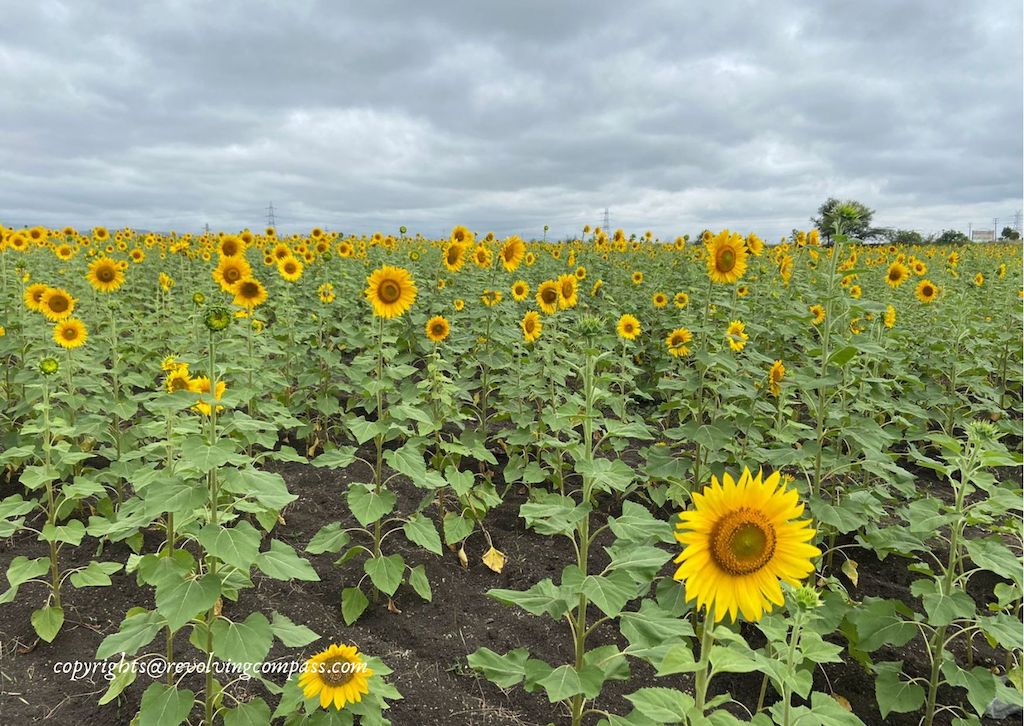
The best time to visit the Royal Enclosures of Hampi itself would be either early morning hours or evening hours around sunset. As the temperature around these times will be much more comfortable than the mid day.
Food options near the Royal Enclosure of Hampi
There are a lot of small local food outlets in and around the Royal Enclosures of Hampi. Some of these with strong reviews and delicious food are Peera Hotel near Underground Shiva Temple, Sri Lakshmi Fast Food on NH 49, Sai Family Restaurant and Sri Varsha Hotel.
On NH 131 there lies a lot of hotels and restaurants as well. Bhavani Hotel, Tree Line, and Ajanadri Hotel. In most of the hotels you will get local cuisines , south Indian Thalis and meals during day time. Which are descent.
We went back to the town of Hospet and had our lunch at Naivedyam Restaurant.
Stay options near the Royal Enclosure of Hampi
The Clark’s Inn Hampi is very centrally located to the Royal Enclosure of Hampi. In fact the parking lot of the Royal Enclosure of Hampi is walkable from the Clark’s Inn. And the Archeological Museum of Hampi is also located right opposite the Clarks Inn Hampi. This hotel also has an on campus restaurant with descent meal options.
Actually, we were very eager to book here and be able to explore the Royal Enclosure of Hampi without the hassle of long driving. But the only deterrent for us was that the hotel had limited parking space. And we needed an accommodation with good parking facility. If you are not bound by parking needs, you can definitely try to stay here.
Across the highway, there are many homestays that are 4-5 km to the Royal Enclosure of Hampi. And are centrally located to both the Royal Enclosure and the Virupaksha Temple area. But, we couldn’t get any of them. Some like Arjuna Homestay have very strong ratings and reviews. Staying in one of these places will definitely be an authentic experience. And they are very economical also.
Our experience at Hotel Malligi Hampi
We stayed at Hotel Malligi in Hampi which was almost 10km from the Royal Enclosure of Hampi. So, on the day of our arrival in Hampi, we first decided to head directly to the Royal Enclosure of Hampi. And then after having explored here, we headed to our hotel. The hotel had good facilities and ample parking. Good food and all other facilities that you expect from a 3 star property. The only catch is the distance from the main ruins. And we were little disappointed in the breakfast spread as well as the restaurant service which was very slow and staff had an uncaring attitude.
Having said that, there is no lack of accommodation in Hampi. Like I said, it is one of the most visited places in Karnataka. From luxury resorts to humble homestays, Hampi has it all. You can browse this complete list of accommodations in Hampi. Here’s a list of accommodations in Hospet, the town located 10km from the ruins of Hampi.
Tips on visiting the Royal Enclosure of Hampi
- It is best to visit the Royal Enclosure of Hampi in either morning or evening hours. This will give protection from sun. And also you will find less crowd to deal with
- The Royal Enclosure of Hampi are like an open museum. The places to see in Royal Enclosure of Hampi are scattered, and sometimes as far from each other as 1 km or more. But the good news is that you can drive to all of them. And there is parking space near all of them. Sometimes you can park on one spot and visit 2-3 nearby places. The parking is mostly in open grounds opposite to the structures of the Royal Enclosure of Hampi.
- It is best to take a guide to explore the Royal Enclosures of Hampi. As a guide will be able to explain to you all the details of the important historical buildings and monuments at the Royal Enclosure of Hampi.
- You can cover the Royal Enclosures of Hampi and the Virupaksha Temple and its surroundings together. As the road that leads to Virupaksha Temple passes from near the Royal Enclosures.
Other general tips on visiting Hampi
- Carry sunglasses, hats and umbrellas for protection from the sun or the rain.
- Wear comfortable cotton cloths and cover your hands and legs if possible to avoid the UV rays and extreme tanning.
- Also, when visiting temples, wear traditional cloths if possible to show respect to the culture and religion of the land.
- Carry enough water with you and keep yourself hydrated all the time.
- Don’t visit during the months of March – June as the highest temperature in this region in this time touches 40 degrees and beyond.
- Give ample time to each trail instead of rushing through them just for the sake of it.
- You will definitely get chance to capture some of the best sunsets in Hampi, so be prepared for the same.
What are some other places to explore around Hampi
Chitradurga Fort is a beautiful and massive fort that you can explore on your way from Bangalore to Hampi . It will require a minimum of 2-3 hours to visit Chitradurga Fort.
Read : Our visit to Chitradurga Fort Karnataka
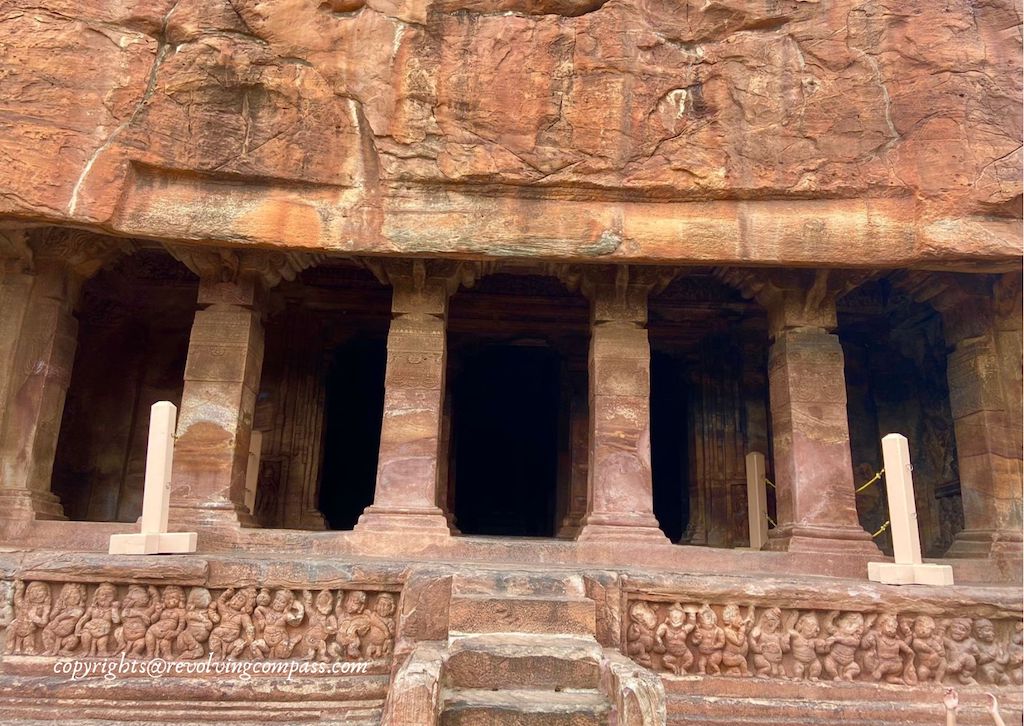
Further 3 hours from Hospete and Hampi lies the trio of Badami, Pattadakal and Aihole – the place known as the cradle of temple architecture in India. The beauty of the sandstone temples here will definitely blow your mind away. We visited the Badami Cave Temples, the UNESCO World Heritage temple complex of Pattadakal and the Temple Complex of Aihole earlier this year on a separate trip. However, you can easily combine a trip to Hampi with one to Badami, Pattadakal and Aihole as well.
Coming soon: our post on how to do a trip to Hampi, Badami, Pattadakal and Aihole together – the heritage tour of North Karnataka.
If you visit Chitradurga, Hampi, Badami, Pattadakal and Aihole all together and intend to spend enough time at each place, then make it a week long trip.
PS: Some of our links are affiliated, this means we will earn a commission when you buy a service or product by clicking those links. However, this will have no extra cost for you.
